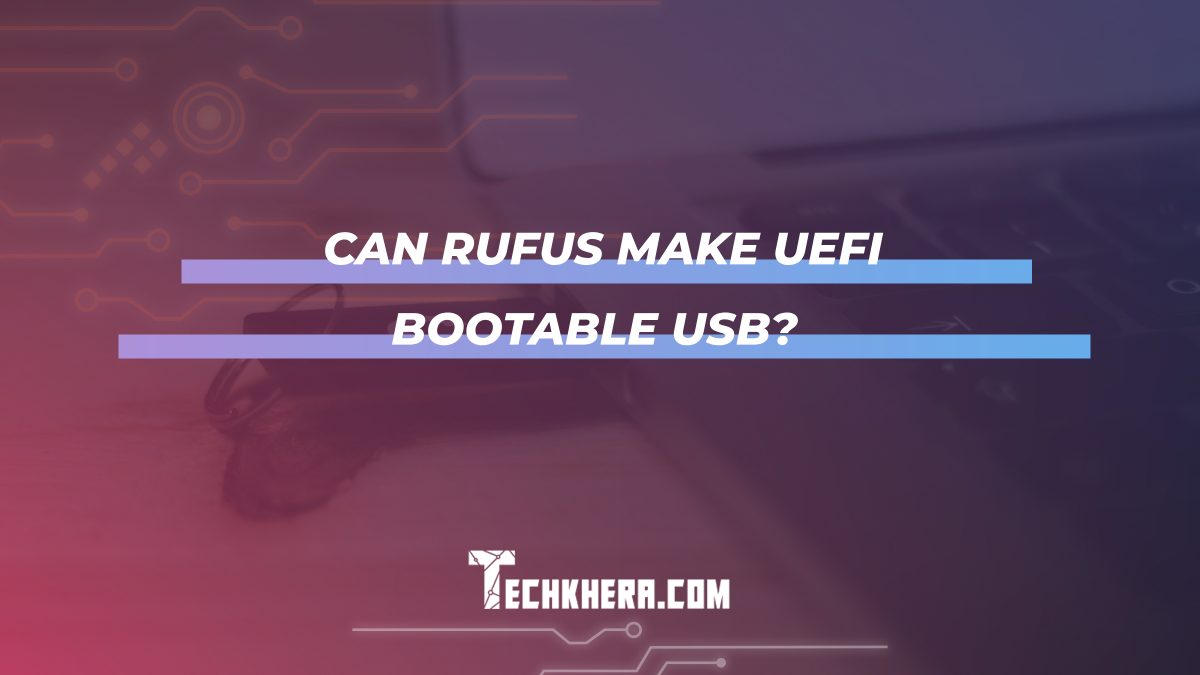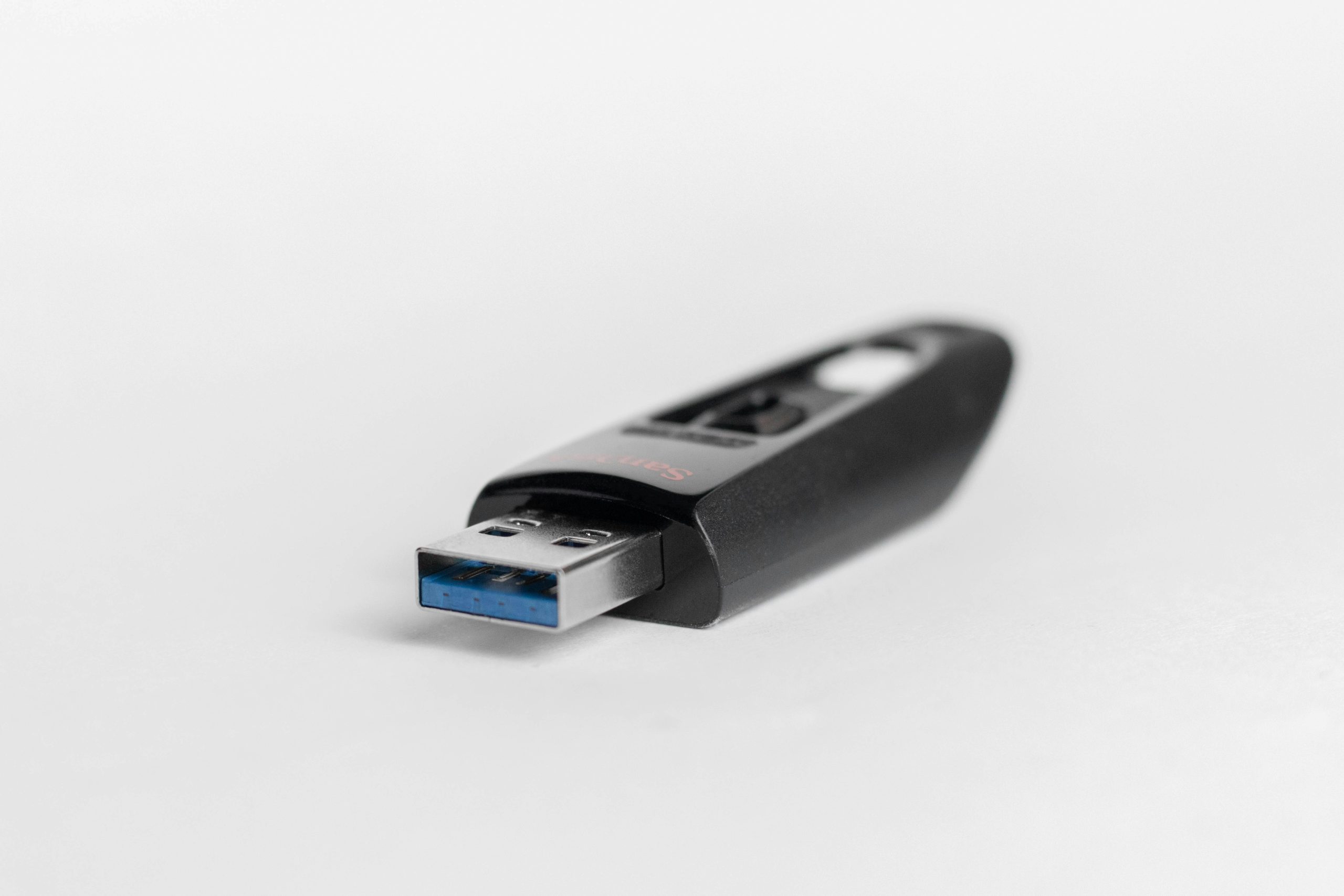
Can Rufus make UEFI bootable USB?
In an era where digital transformation reigns supreme, the need for efficient software installation methods has never been more critical. As we venture deeper into a world dominated by UEFI (Unified Extensible Firmware Interface), traditional boot methods are becoming relics of the past. This shift raises a pivotal question among tech enthusiasts and everyday users alike: can Rufus, the popular USB formatting tool, rise to this challenge and create a UEFI bootable USB?
Imagine standing at the crossroads of technology with a new operating system waiting to be installed on your machine, only to find yourself grappling with compatibility issues and outdated tools. Fear not! Rufus has emerged as a beacon of hope for those navigating this complex landscape. In this article, we’ll explore whether Rufus can indeed facilitate seamless UEFI installations and how it simplifies what once was an arduous process. Buckle up as we dive into the intricacies of creating bootable USB drives in this new age of computing!
Contents
What is Rufus? Key Features Explained
Rufus is a lightweight and user-friendly utility designed primarily for creating bootable USB drives. While its interface may seem simplistic at first glance, it boasts a powerful array of features that make it indispensable for tech enthusiasts and IT professionals alike. One of the standout functionalities of Rufus is its capability to format USB drives quickly without the need for additional tools, streamlining the process significantly. Furthermore, Rufus supports various file systems—FAT32, NTFS, exFAT—which allows users to tailor their USB drives depending on specific requirements or compatibility needs.
Another impressive feature is Rufus’s ability to support numerous disk image formats including ISO, IMG, and ZIP files. This versatility simplifies the task of installing different operating systems or creating rescue media from any number of bootable images. Its integration with advanced UEFI firmware allows for seamless installation on modern hardware configurations; this ensures that users don’t encounter common pitfalls associated with legacy setups when preparing their bootable media. With options like partition scheme selection (MBR or GPT), as well as advanced formatting options such as cluster size adjustments, Rufus caters to both novice users and seasoned technicians looking to optimize their booting experience further.

Understanding UEFI and Legacy BIOS Differences
The transition from Legacy BIOS to UEFI (Unified Extensible Firmware Interface) represents a significant evolution in the way computers initialize and operate. While Legacy BIOS, which has been around since the early days of computing, relies on a straightforward process to boot operating systems from traditional hard drives, UEFI introduces a more sophisticated architecture that enhances system security and functionality. One key difference is UEFI’s support for larger disk partitions; it can manage disks over 2TB in size effortlessly, addressing one of the primary limitations of its predecessor. This capability not only improves storage efficiency but also paves the way for advanced features like faster boot times and graphical interfaces.
Moreover, UEFI’s Secure Boot feature distinguishes it as a frontrunner in protection against firmware attacks—ensuring that only trusted software runs during the startup phase. In contrast, Legacy BIOS lacks such mechanisms, making systems vulnerable to various threats. As Rufus steps into this dynamic landscape by allowing users to create bootable USB drives tailored for either mode, understanding these fundamental differences becomes crucial for those looking to optimize their installations or troubleshoot effectively. Recognizing whether you’re dealing with a secure environment or an older setup can dramatically influence how you prepare your USB media and proceed with operating system installations or repairs.
Preparing Your USB Drive for Rufus
Before diving into the intricacies of using Rufus to create a UEFI bootable USB, you must ensure that your USB drive is adequately prepared. Start by checking your USB drive’s storage capacity—ideally, it should have at least 8 GB to accommodate most operating system images. Next, format the drive to eliminate any previous data and potential issues; use the FAT32 file system for maximum compatibility with UEFI systems. In this step, remember that formatting will erase all content—so back up anything important beforehand.
Once your drive is formatted, consider partitioning it if you want to multitask. This allows you to create different partitions for various installations or utilities without having multiple drives cluttering your workspace. Additionally, keep in mind that some BIOS settings might require enabling or disabling Secure Boot for proper functionality with certain OS images. By taking these preparatory steps seriously before launching Rufus, you’ll streamline the overall process and face fewer hiccups when you’re ready to boot from your newly created USB stick.

Step-by-Step Guide to Create UEFI USB
Creating a UEFI bootable USB using Rufus is a straightforward process that can be broken down into easy-to-follow steps. First, ensure you have the latest version of Rufus downloaded and your desired ISO file ready. Plug in your USB drive; keep in mind that all data on it will be erased, so back up any important files beforehand. Once you open Rufus, select your USB drive from the device dropdown menu; this is critical to avoid creating or modifying other drives unintentionally.
In the partition scheme options, choose GPT for UEFI systems. This aligns with modern firmware requirements and ensures compatibility with most newer machines. Additionally, select the corresponding filesystem type – usually FAT32 for UEFI booting, as it’s broadly supported by various devices and operating systems during the startup process. After setting these parameters, simply click Start, and watch as Rufus efficiently transforms your ordinary USB into a powerful bootloader tailored for UEFI environments. Remember to tweak advanced settings only if you’re comfortable doing so; simplicity can often lead towards success!
Troubleshooting Common Issues with Rufus
When using Rufus to create a UEFI bootable USB, users may encounter common issues that can derail their setup. One frequent problem arises from incorrect partition schemes; selecting the wrong option can render your USB drive non-bootable on UEFI systems. To troubleshoot this, double-check that you’ve chosen GPT for UEFI setups and MBR for BIOS/Legacy options. Additionally, ensure your firmware settings are appropriately configured—disabling Secure Boot can often resolve conflicts that prevent booting.
Another hurdle commonly faced involves filesystem errors or corruption during the image writing process. If you find that your USB doesn’t seem to recognize the ISO file correctly, it’s worth trying different filesystems like FAT32 instead of NTFS or exFAT when configuring Rufus. This switch could make all the difference, as many UEFI firmware versions have specific compatibility preferences. Moreover, updating Rufus to its latest version can mitigate bugs that may be contributing to these issues—keeping software current is always a best practice to enhance performance and reliability in such critical tasks.

Conclusion: Is Rufus the Ideal Choice?
In evaluating whether Rufus is the ideal choice for creating UEFI bootable USB drives, it becomes evident that its robust features and user-friendly interface cater to a wide range of users. For tech enthusiasts seeking efficiency and versatility, Rufus stands out with its rapid data transfer speeds, allowing even large ISO files to be loaded onto USB drives in a fraction of the time compared to other tools. Additionally, the inclusion of options like partition scheme and file system format empowers users to customize their bootable media according to specific hardware requirements or preferences.
However, while Rufus excels in many areas, it’s essential for users to consider their particular needs. Some may prioritize a more comprehensive instructional guide or community support, which is an area where other tools could shine. Ultimately, whether Rufus is your ideal solution depends on your level of expertise and specific use case—if you crave speed and flexibility without unnecessary frills, Rufus might just be your perfect match. The blend of reliability and performance makes it hard not to recommend this tool as a primary option for anyone looking to create UEFI bootable USB drives seamlessly.
